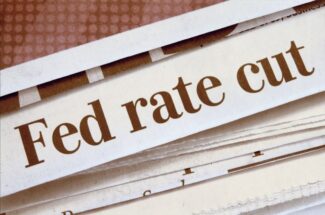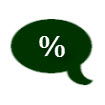It was “Fed Day,” and the markets got rattled. Stocks ended the day sharply lower, with the Dow closing down over 1100 points and mortgage bonds selling off by 47 basis points. It was the first 10-day losing streak since 1974. Why it happened? Well, it was a direct reaction to Wednesday’s FOMC meeting, where the Federal Reserve announced yet another 25-basis-point rate cut today, marking the third rate cut this year.
 The problem is that earlier in the year, the expectation was for another 1% reduction in 2025, but that projection has now been scaled back to 75 basis points, or even as little as 50 basis points. While rate cuts are typically seen as a response to economic challenges, the comments from the Fed suggest a different outlook. This signals that while the Fed is easing policy, they are far from panicking. In fact, stronger-than-expected economic indicators show that the economy may not be as fragile as previously feared.
The problem is that earlier in the year, the expectation was for another 1% reduction in 2025, but that projection has now been scaled back to 75 basis points, or even as little as 50 basis points. While rate cuts are typically seen as a response to economic challenges, the comments from the Fed suggest a different outlook. This signals that while the Fed is easing policy, they are far from panicking. In fact, stronger-than-expected economic indicators show that the economy may not be as fragile as previously feared.
Another factor to watch is the Fed’s balance sheet. Over the past year, the Fed has been actively reducing its balance sheet, letting assets roll off without reinvesting them. This “runoff” has been a quiet but important backdrop to their rate decisions, as it removes liquidity from the financial system. However, there is speculation that the Fed may halt this process sometime next year, choosing instead to reinvest maturing assets back into Treasuries. If that happens, it could help stabilize borrowing costs even further.
For the average consumer, Wednesday’s rate cut has immediate implications, particularly when it comes to borrowing costs. Products like personal loans and auto loans will see rates ease – but not necessarily so for all consumers with credit card debt, as banks tend to punish those cardholders who carry balances. The clear winner? Homeowners. Lower rates directly impact Home Equity Lines of Credit (HELOCs), making it cheaper to access funds tied to home equity. HELOC rates have now dropped 100 basis points in 2024 and are projected to drop further in 2025, albeit slightly less than we had all hoped.
This comes at a time when home equity in the United States has been rising steadily. Recent data from CoreLogic highlights the strength of homeowner equity across the country. Over the past year, homeowners with mortgages – representing about 62% of all properties – saw their equity grow by $425 billion, or 2.5%. When factoring in all U.S. homes, total equity has reached an astounding $37 trillion, which averages out to $440,000 per homeowner.
This rise in equity has been driven by continued home appreciation combined with amortization, as homeowners pay down their mortgages. The result is that many households are sitting on significant financial resources. Lower Fed rates make it even more appealing to use a HELOC to tap into that equity, whether to consolidate debt, make home improvements, or fund other large expenses or investments. (Again, prudence and financial responsibility are required when using a tool such as a HELOC)
But there is a caveat. As the housing market shows signs of cooling, some banks will tighten their lending standards for HELOC products. This means that even though borrowing costs are falling, the availability of these loans could shrink in the months ahead. For those considering tapping into their home equity, now may be the most favorable time to do so, as conditions could shift if the economy or banking sector changes course.
This market volatility underscores the importance of careful financial planning and consideration. While lower interest rates can make borrowing more attractive, they can also signal economic uncertainties that may impact the average consumer. It’s advisable to carefully assess your financial situation and consult a financial advisor to determine the best course of action tailored to your needs.
Would you rather have a million dollars today or start with a penny that doubles daily for 30 days? Please email or message me to let me know your choice! Please let me know if you have a good “Would you rather” question, and we will highlight your submission.
 Shmuel Shayowitz (NMLS#19871) is President and Chief Lending Officer at Approved Funding, a privately held local mortgage banker and direct lender. Approved Funding is a mortgage company offering competitive interest rates as well as specialty niche programs on all types of Residential and Commercial properties. Shmuel has over 20 years of industry experience, including licenses and certifications as a certified mortgage underwriter, residential review appraiser, licensed real estate agent, and direct FHA specialized underwriter. He can be reached via email at Shmuel@approvedfunding.com.
Shmuel Shayowitz (NMLS#19871) is President and Chief Lending Officer at Approved Funding, a privately held local mortgage banker and direct lender. Approved Funding is a mortgage company offering competitive interest rates as well as specialty niche programs on all types of Residential and Commercial properties. Shmuel has over 20 years of industry experience, including licenses and certifications as a certified mortgage underwriter, residential review appraiser, licensed real estate agent, and direct FHA specialized underwriter. He can be reached via email at Shmuel@approvedfunding.com.
Please Complete This Form To Get In Touch With Shmuel


















